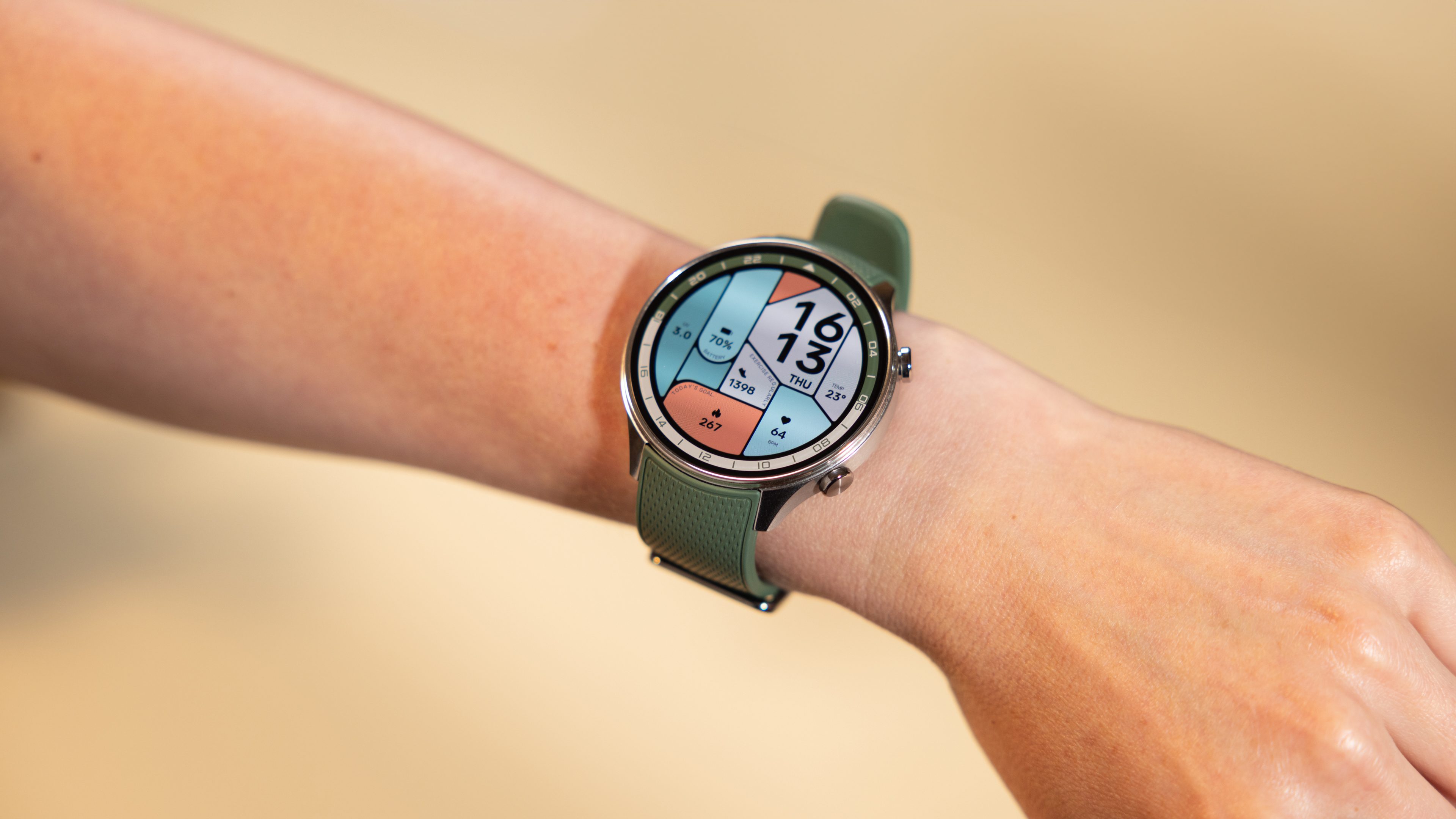Fitness
Smartwatches and Fitness Trackers May Be Unreliable in Tracking

Smartwatches and fitness trackers have come a long way, offering more comprehensive health and fitness tracking capabilities than ever. As these devices continue to improve, has recorded data using these devices become more reliable? A new study suggests you shouldn’t trust all the metrics your smartwatch or fitness tracker records.
Published in Sports Medicine, a recent system review revealed the state of smartwatches and fitness trackers today regarding their reliability and potential limitations in terms of tracking vital metrics, ranging from heart rate and SpO2 to aerobic capacity and sleep.
Researchers conducted an umbrella review, which compiled several findings into a single study that involved over 430,465 participants. The gathered data yielded surprising findings that support how key tracking features in wearables have improved over the years, while some tools could still be far from being truly reliable.
Which aspects of health metrics from smartwatches are reliable?
One of the key findings showed how the heart rate measurement in today’s smartwatches and fitness trackers has an accuracy of +/- 3 percent with the possibility of a slight deviation. This means the heart rate data from these wearables are highly accurate.
The same case is touted for arrhythmia detection including Afib, with the sensitivity and specificity of the feature touted to be 100 percent and 95 percent accurate, respectively. Moreover, blood oxygen level saturation or SpO2 monitoring has also shown a 2 percent mean difference, indicating a high level of reliability.
Smartwatches might not be reliable enough to monitor your sleep and fitness activities
It is on the wellness and fitness fronts that smartwatches and fitness trackers seem to exhibit a notable degree of inaccuracy. For instance, VO2 max, or a measurement of the amount of oxygen your body can absorb and use during workouts, has been highlighted to produce about +/- 15 percent difference during rests and +/- 9 percent during exercises. On the other hand, a bigger mean error is observed when tracking physical activity intensity.
Even so, the findings mentioned that wearables also fail to deliver dependable step counts despite being one of the most basic features. It listed mean errors as falling between -9 to +12 percent. Meanwhile, calorie expenditure measurement, or the amount of calories burned during a workout, has an even worse accuracy rate with a -21 percent to +15 percent difference.
Regarding sleep, data from smartwatches and fitness trackers might not be relied upon as well. The study revealed these devices overestimate sleep time by as much as 10 percent when compared to results from polysomnography.
What can we build from this? Are wearables only useful to capture valuable health and fitness insights? Users should be aware that accuracy in other metrics does vary significantly and they should be cautious when interpreting such data.
What is your opinion on this study? How do you manage your health from your smartwatch or fitness tracker? We want to hear your thoughts on this.

Fitness
Golf fitness: One exercise that checks all the boxes

Everyone loves a golf-specific exercise that checks all the boxes.
This week, Golfweek’s fitness guru and long driver Averee Dovsek and her trainer Jon Freed, demonstrate the quadruped plank kettlebell pull-through as an excellent workout for golfers due to several reasons.
Golfers require strong and stable core muscles to maintain balance and control during the swing. This exercise targets the core, particularly the transverse abdomens and obliques, which are essential for rotational stability and power.
The movement mimics the rotational aspects of a golf swing. As you pull the kettlebell across your body, you engage the muscles that are crucial for generating rotational force, helping to improve the power and accuracy of your swing.
The exercise emphasizes resisting rotation, which is vital for maintaining proper form and preventing injury during the dynamic motions of golf.
The quadruped position also challenges your balance and coordination.
If you’re interested in any of Averee’s fitness content, click here.
If you’re looking for more instruction, click here.
This article originally appeared on Golfweek: Golf fitness: One exercise that checks all the boxes
Fitness
Fit balance exercises into a busy day – Harvard Health

Adding balance exercises to a hectic schedule might seem like one chore too many. How are you supposed to squeeze in another 30-minute regimen when you’re already exercising daily, working, and running errands? The answer is by doing a little balance training at a time. “Just a minute of balance exercise here or there has a cumulative effect. As your balance improves, it gets easier to carry out daily functions,” says Kristina Dunlea, a physical therapist at Harvard-affiliated Brigham and Women’s Hospital.
We need good balance to safely perform upright activities, such as walking, getting up and down from a chair or bed, climbing stairs, or reaching up for a dish in a cupboard. Unfortunately, balance declines over time, increasing the risk of falls — a leading cause of injury and disability past age 65.
Finding the time
Since you need only a minute for a balance exercise, Dunlea recommends integrating it into a free moment that’s already built into your day.
“For many people, it’s when they’re standing and waiting for coffee to brew or brushing their teeth. Or it might be during TV time: think of commercials as your cue to get up and do a balance exercise,” she suggests.
Those opportunities also come with equipment to keep you safe if you become unstable during a balance exercise, such as a counter or desk to hold on to or a chair to fall back on.
Balance exercise ideas
A counter or sturdy chair works well for several effective balance exercises.
For example, a sturdy chair is a good spot for a sit-to-stand exercise — going from a sitting to a standing position, arms crossed, then returning to a sitting position and repeating the process. Dunlea recommends doing this exercise five to 10 times in a row. “It strengthens your leg and abdominal muscles and trains you to shift the main weight of your body up over your feet — your base of support,” she explains.
A counter works well for doing one minute of heel raises, tandem standing or walking, or standing on one leg (see “3 balance exercises to try at home”). “Standing on one leg is especially helpful for tasks requiring you to shift your weight and balance on one leg for a moment, such as climbing stairs or stepping up onto a curb,” Dunlea says.
But don’t continue a balance exercise if it’s so challenging that you’re at risk of falling. And if you currently have balance problems, it’s best to work with a physical therapist before trying these moves on your own. For more information, check out the Harvard Special Health Report Better Balance.
3 balance exercises to try at home
Tandem standing
Stand with your arms at your sides. Place your left foot directly in front of your right foot, heel to toe, and squeeze your inner thighs together. Lift your arms out to your sides to help you balance. Hold the position up to 30 seconds. Return to the starting position, then repeat with your right foot in front.
Heel raises

Stand with your arms at your sides. Lift your heels, shifting your weight to the balls of your feet. Try to balance evenly without allowing your ankles to roll inward or outward. Hold. Lower your heels to the floor, maintaining good posture as you do. Repeat 10 times.
Single leg stance

Stand with your arms at your sides. Bend your right knee, lifting that foot several inches off the floor, and balance on your left leg. Hold the position up to 30 seconds. Return to the starting position, then repeat the process while balancing on your right leg.
Exercise photos by Michael Carroll
Fitness
Comedian Bill Bailey thrilled with 'game-changer' sofa-based fitness routine

A QUIRKY new sofa-based fitness routine has been created – to inspire those who followed the action-packed Summer of Sport on TV to do more exercise.
The new S.O.F.A (Sit On Fitness Apparatus) workout routine is a set of simple movements people can do using their sofa.
2
2

Fronted by comedian Bill Bailey, it’s designed for those who want to emulate the elite athletes they’ve been used to watching on television from the comfort of their own front rooms.
It comes after research of 2,000 adults found a quarter of the nation still struggle to fit movement into their day-to-day routine and aren’t sure how to start being more physically active.
A figure which increases to 38 per cent among those with long term health conditions.
But almost a third (27 per cent) have been ‘inspired’ by Summer of Sport to be more active with a further 19 per cent inspired to take up football and 13 per cent wanting to give swimming a try.
Comedian and actor, Bill Bailey, added: “I’m excited to be partnering with We Are Undefeatable for the second year, to continue to encourage people to be more active in whatever ways they can – big or small.
“This S.O.F.A workout is an absolute game-changer.
“It shows fitness doesn’t have to be just for the athletes that we’re all watching on our screens, you can start right in your own living room, on your sofa – it’s all about making fitness fun and open for everyone.”
The study found having more free time (38 per cent), not feeling self-conscious (30 per cent) and having accessible exercise options (20 per cent) would help those polled integrate physical activity more into their routine.
And 31 per cent said watching sports on TV or another device like a smartphone or tablet motivates them to be more active.
Nearly eight in 10 (78 per cent) have never used their sofa as a piece of equipment to do physical activity.
Currently watching TV (84 per cent), reading (60 per cent) and browsing on their phone (53 per cent) are among the most common sofa-based activities.
However, 52 per cent of those with long term health conditions would be ‘interested’ in doing physical activity from their sofa.
While 66 per cent of everyone polled would be interested in building physical activity into their existing routines and while at home.
The study carried out through OnePoll.com also found 38 per cent are unsatisfied with their current level of movement of their bodies.
Duleep Allirajah, chief executive of Richmond Group of Charities and spokesperson for We Are Undefeatable, said: “It has been a fantastic summer of sport with more to come and many people across the country may be inspired to get active.
“However, for those of us living with long-term health conditions the idea of taking up new activities can be intimidating or unmanageable.
“That’s why we wanted to show that moving more can be accessible and part of your everyday routine – starting right from the comfort of your sofa.”
“Through this campaign we aim to show what it means to be physically active with a long-term health condition and the benefits it can bring to our physical and mental health.
“We’re delighted to work with Bill Bailey again to do this.”
-

 Ohio1 week ago
Ohio1 week agoOhio taxpayers sent families $966 million for private school tuition: Capitol Letter
-

 News1 week ago
News1 week agoRoger Stone says his email accounts were how the hackers got into the Trump campaign
-

 Movie Reviews1 week ago
Movie Reviews1 week agoDead Talents Society, hilarious supernatural comedy starring Gingle Wang
-

 Science1 week ago
Science1 week agoOpinion: A route to safer chemotherapy
-

 World1 week ago
World1 week agoRussia-Ukraine war: List of key events, day 901
-

 World1 week ago
World1 week agoUkraine recieves €4.2 billion from EU as part of recovery plan
-

 World1 week ago
World1 week agoA hidden ocean on Mars, would it spur human settlement?
-

 Politics1 week ago
Politics1 week agoFox News Power Rankings: Five themes emerge in the battle for the House gavel












